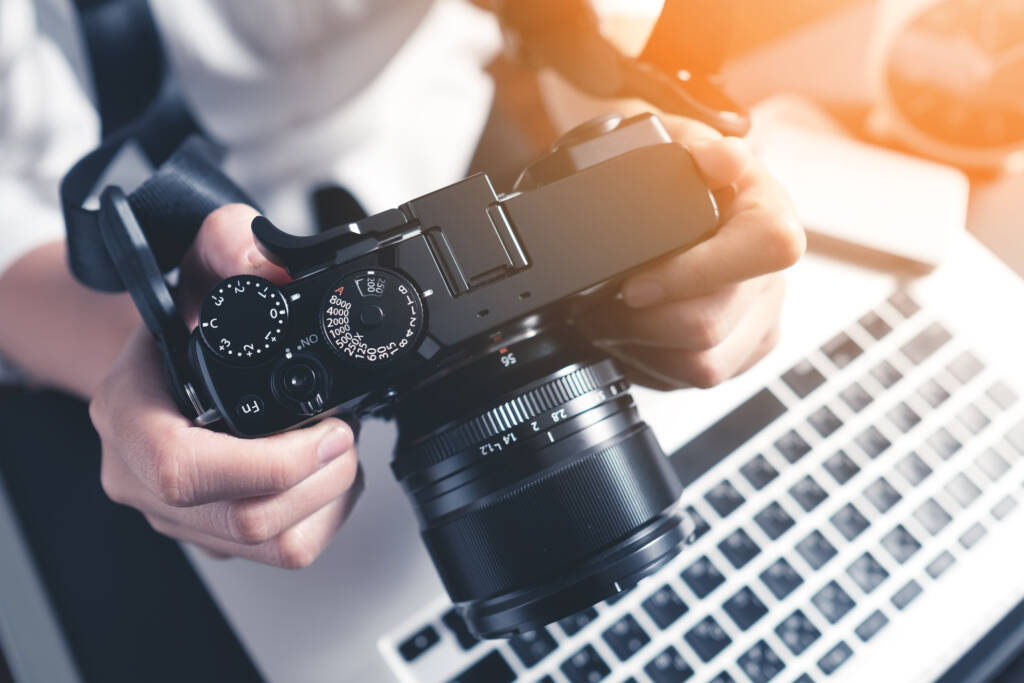
Middle School Photography 1a

Photographs are all around us, and each helps to tell a story. Now it’s time for you to create your story through photos you learn how to take in this course. Learn the basics of using a camera, lighting, and how to choose great subjects to create magazine-worthy photos and amaze your friends and family with your skills.
Major Topics and Concepts
Unit 1: Introduction to Photography
- Define photography
- Discuss the early history of photography
- Explore how cameras work
- Explain how to transfer images from a camera to a computer
Unit 2: Meeting Your Camera
- Explore the basic functions of point-and-shoot cameras
- Examine some of the basic features of point-and-shoot cameras
- Discuss some of the common risks to digital cameras
- Learn how to care for your camera so that it will continue to work effectively
Unit 3: Photography as Art
- Discuss and identify the elements of art
- Review the principles of design
- Apply aesthetic scanning to evaluate a piece of art
- Use the four-step method of art criticism to evaluate a piece of art
Unit 4: Choosing a Subject
- Explain some of the differences between good photographs and great photographs
- Identify the purpose of photographs
- List the subjects that can be captured by photographers
- Discuss how the rule of thirds helps photographers take appealing photographs
Unit 5: Elements of Composition
- Discuss different ways to focus photographs
- Define and apply the photography techniques of leading lines and filling the frame
- Identify and use the technique of framing in photographs
- Describe the differences between portrait and landscape orientation in photographs
- Examine how the work of others can help improve our own photographs
Unit 6: Backgrounds & Foregrounds
- Define foreground, middleground, and background
- Discuss how framing can be used in the foreground of an image
- Describe some of the problems that can occur in foregrounds and backgrounds and explain how these problems can affect the quality of a photograph
- List some of the techniques and methods that can be used to draw attention to the subject of the photograph and apply them to your own work
- Explain how the use of foreground, middleground, and background can add depth to a photograph
Course Materials
Physical
- Digital camera: “point and shoot” or above
- USB cable, as needed to transfer photos
- Audio recording device
- Video recording device
Software
- Word processing software
- Slide presentation software
- Online timeline creator
Competencies
Career as a Photographer
Students will demonstrate an understanding of a career as a photographer by summarizing the history of photography, describing a career in photography, and explaining the role of a photographer.
Camera as a Tool
Students will demonstrate an understanding of the camera as a tool by describing the functions of a camera, explaining the features of a camera, and summarizing the care of a camera.
Photography as Art
Students will demonstrate an understanding of photography as art by describing the use of the elements of art in photography, explaining the use of principles of design in photography, and summarizing the method of art criticism.
Taking a Photograph
Students will demonstrate an understanding of taking a photograph by describing the purpose of photographs, explaining the rule of thirds, and summarizing subjects that can be captured in a photograph.
Composition
Students will demonstrate an understanding of composition by describing composition techniques and differentiating portrait and landscape orientation in photographs.
Picture Plane
Students will demonstrate an understanding of the picture plane by explaining the use of foreground in photography, describing the use of middle ground in photography, and summarizing the use of background in photography.
